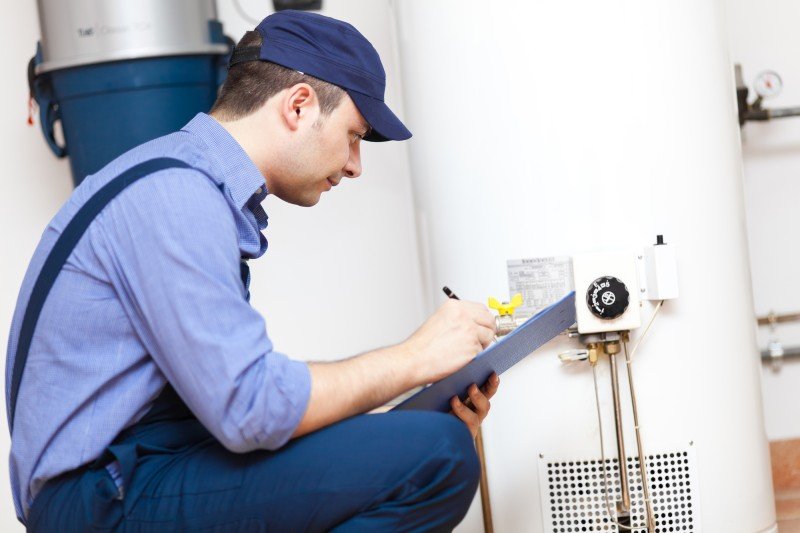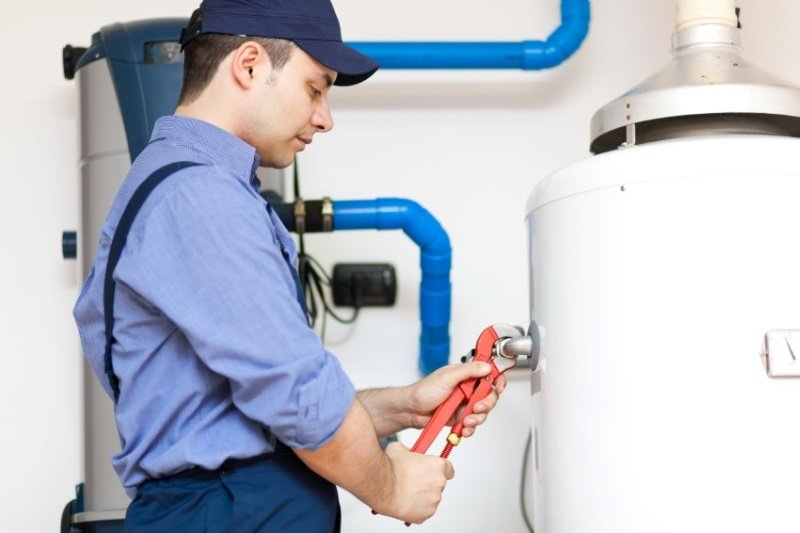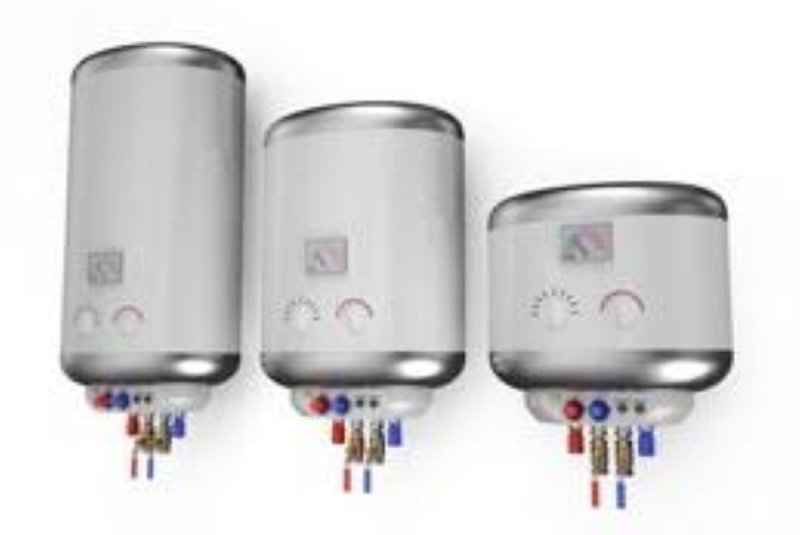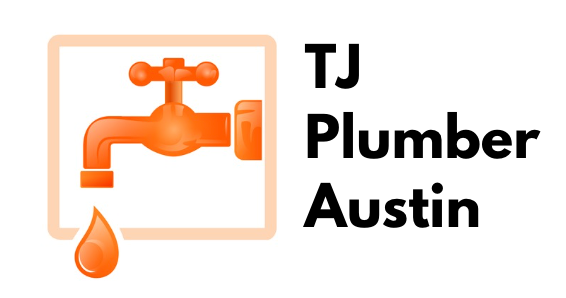Water Heater Installation – Austin, TX
HOW TO CALCULATE HEATER CAPACITY FOR WATER HEATER INSTALLATION?
Calculating the heater capacity for a water heater installation involves determining the appropriate size of the water heater based on the hot water demand of your household. Here’s a step-by-step guide to help you calculate the heater capacity:
1. Estimate Peak Hourly Hot Water Demand: Determine the maximum amount of hot water your household is likely to use during peak hours. This can vary depending on the number of people in your household, the number of bathrooms, and your hot water usage habits. A common method is to estimate hot water usage in gallons per hour (GPH) based on fixture flow rates. For example:
– Shower: 2.5 GPM (gallons per minute)
– Kitchen Sink: 2.0 GPM
– Bathroom Sink: 1.5 GPM
– Dishwasher: 1.5 to 2.5 GPM
– Washing Machine: 1.5 to 2.5 GPM
2. Calculate Total Fixture Demand: Add up the estimated GPH for all hot water fixtures that may be used simultaneously during peak hours. This will give you the total peak hourly hot water demand for your household.
3. Determine Temperature Rise: The temperature rise is the difference between the incoming cold water temperature and the desired hot water temperature. The typical desired hot water temperature is around 120°F (49°C). You can find the average cold water temperature for your location from local weather data or use a standard value (e.g., 50°F or 10°C for many regions). Subtract the cold water temperature from the desired hot water temperature to calculate the temperature rise.
4. Calculate Required Heater Capacity: Use the following formula to calculate the required heater capacity (in gallons) based on the total fixture demand and temperature rise:
Required Heater Capacity (in gallons) = Total Fixture Demand (in GPH) × Temperature Rise (in °F) / 60
For example, if your total fixture demand is 50 GPH and the temperature rise is 70°F:
Required Heater Capacity = 50 GPH × 70°F / 60 = 58.33 gallons
5. Select Appropriate Water Heater Size: Choose a water heater with a capacity equal to or slightly larger than the calculated required heater capacity. Water heater capacities are typically available in increments (e.g., 40, 50, 60 gallons), so round up to the nearest available size if necessary.
6. Consider Recovery Rate: In addition to capacity, consider the recovery rate of the water heater, which is the amount of hot water the unit can deliver per hour. A higher recovery rate can ensure a steady supply of hot water during peak usage periods.
By following these steps and calculating the heater capacity based on your household’s specific hot water demand, you can select a water heater that meets your needs efficiently. If you’re unsure about any of the calculations or need assistance, consider consulting with a qualified plumber near me or HVAC technician.


Call Now For A Free Estimate
WATER HEATER INSTALLATION BEST PRACTICES
When installing a water heater or water heater replacement following best practices ensures not only proper installation but also safety, efficiency, and longevity of the unit. Here are some key best practices to keep in mind:
1. Location: Install the water heater in a well-ventilated area with proper clearances to combustible materials and adequate access for maintenance. Follow local building codes and manufacturer’s recommendations regarding installation location.
2. Leveling: Ensure the water heater is installed on a level surface to prevent issues with operation and potential leaks. Use shims if necessary to achieve a level installation and thus avoid future water heater repair.
3. Safety Measures: Install a temperature and pressure relief valve (TPR valve) on the water heater to prevent excessive pressure buildup and ensure safe operation. The TPR valve should discharge to an appropriate location, such as a drain or outside area.
4. Water Supply Connections: Use appropriate fittings and materials for connecting the water supply lines to the water heater. Consider installing a shut-off valve on the cold water inlet for easy maintenance and servicing.
5. Ventilation: For gas water heaters, ensure proper ventilation to safely exhaust combustion gases. Follow manufacturer’s instructions and local building codes for venting requirements, including minimum vent pipe sizes and clearances to combustible materials.
6. Electrical Connections: If installing an electric water heater, ensure electrical connections are installed according to local electrical codes and manufacturer’s instructions. Use properly sized wiring and connect to a dedicated circuit with the appropriate voltage and amperage.
7. Insulation: Consider insulating hot water pipes to reduce heat loss and improve energy efficiency. Use insulation materials rated for use with hot water pipes and follow manufacturer’s recommendations for installation.
8. Expansion Tank: In areas with closed plumbing systems or high water pressure, consider installing an expansion tank to accommodate thermal expansion and prevent pressure buildup within the water heater and plumbing system.
9. Anode Rod Inspection: Regularly inspect and replace the sacrificial anode rod in the water heater to prevent corrosion and extend the lifespan of the tank. Follow manufacturer’s recommendations for inspection intervals and replacement schedule.
10. Pressure Testing: After installation, perform a pressure test to check for leaks and ensure the integrity of the plumbing connections. Repair any leaks immediately to prevent water damage and ensure proper operation.
11. Manufacturer’s Instructions: Follow the manufacturer’s installation instructions and guidelines provided with the water heater. Failure to follow these instructions may void the warranty and compromise the safety and performance of the unit.
By adhering to these best practices and consulting with a qualified plumber in Austin or HVAC technician as needed, you can ensure a safe, efficient, and reliable water heater installation.


Call Now For A Free Consultation
IS AN ELECTRIC WATER HEATER INSTALLATION DIAGRAM STILL RELEVANT?
Yes, an electric water heater installation diagram is still relevant and can be incredibly helpful for several reasons:
1. Understanding Installation Steps: A diagram provides a visual representation of the installation process, making it easier to understand the steps involved. This is particularly useful for DIY enthusiasts or professionals who may be installing a water heater for the first time or need a refresher on the process.
2. Ensuring Proper Connections: Electric water heaters require specific electrical connections, including wiring the heating elements and thermostat, as well as connecting to a dedicated electrical circuit. A diagram can help ensure these connections are made correctly and according to local electrical codes.
3. Visualizing Venting and Plumbing Layout: While electric water heaters do not require venting for combustion gases like gas water heaters, they still require proper plumbing connections for cold water inlet and hot water outlet. A diagram can help visualize the layout of these connections and ensure proper installation.
4. Safety Considerations: Electric water heaters involve electrical connections that must be installed safely to prevent hazards such as electric shock or fire. A diagram can highlight safety considerations and help ensure proper grounding and insulation of electrical components.
5. Troubleshooting: In the event of issues with the water heater, having a diagram can aid in troubleshooting by providing a reference for identifying components and connections. This can be particularly useful for diagnosing electrical problems or leaks.
6. Compliance with Regulations: Following a diagram can help ensure compliance with local building codes and regulations governing the installation of electric water heaters. This is important for ensuring the installation is safe and meets legal requirements.
Overall, an electric water heater installation diagram remains a valuable tool for guiding the installation process, ensuring safety and compliance and avoid calling emergency plumbing services. Whether you’re installing a new water heater yourself or hiring a professional, referencing a diagram can help ensure a successful installation.
Got Questions? Call Now To Get Answers
WATER HEATER INSTALLATION CHECK LIST
1. Pre-Installation Preparation:
– Obtain necessary permits and ensure compliance with local building codes.
– Gather all required tools and materials, including wrenches, pipe cutters, pipe thread sealant, fittings, insulation, etc.
– Turn off electricity or gas supply to the existing water heater.
– Drain the existing water heater and disconnect it from the water supply and electrical or gas connections.
2. Site Preparation:
– Select an appropriate location for the new water heater with proper clearances and access for installation and maintenance.
– Ensure the installation area is level and clean.
– Verify adequate ventilation for gas water heaters and clearances to combustible materials.
3. Water Heater Installation:
– Position the new water heater in the designated location, ensuring it is level and stable.
– Connect the water supply lines to the cold water inlet and hot water outlet, using appropriate fittings and pipe thread sealant.
– Install shut-off valves on the cold water inlet and hot water outlet for easy maintenance.
– Connect the temperature and pressure relief valve (TPR valve) to the appropriate port on the water heater and route the discharge pipe to a safe location.
– Install any required expansion tank, check valve, or pressure regulator as necessary.
– For electric water heaters, wire the heating elements and thermostat according to manufacturer’s instructions and local electrical codes.
– For gas water heaters, connect the gas supply line to the gas control valve and ensure proper gas line sizing and leak testing.
– Insulate hot water pipes to reduce heat loss and improve energy efficiency.
4. Post-Installation Checks:
– Perform a pressure test to check for leaks in the plumbing connections.
– Turn on the water supply and fill the tank with water, checking for leaks at all connections.
– Turn on the electricity or gas supply and verify proper operation of the water heater.
– Set the temperature on the thermostat to the desired setting and monitor for any issues during the initial heating cycle.
5. Documentation and Warranty:
– Keep records of the installation, including permits, receipts for materials, and manufacturer’s instructions.
– Register the warranty for the new water heater and retain any warranty documentation for future reference.
6. Safety Considerations:
– Ensure proper grounding and bonding of electrical components for electric water heaters.
– Test the operation of the temperature and pressure relief valve to ensure it functions correctly.
– Provide appropriate warning labels and instructions for users regarding safe operation and maintenance of the water heater.
By following this checklist, you can ensure a successful water heater installation that meets safety standards, complies with regulations, and provides reliable hot water for your home.
ESSENTIAL PRECAUTIONS DURING WATER HEATER INSTALLATION
1. Turn Off Utilities: Before beginning any installation work, turn off the electricity or gas supply to the existing water heater. This prevents the risk of electrical shocks or gas leaks during the installation process.
2. Drain the Tank: Drain the existing water heater completely before disconnecting it from the water supply and removing it. This reduces the risk of water spills and makes the removal process safer.
3. Use Proper Lifting Techniques: Water heaters can be heavy, especially when full of water. Use proper lifting techniques or mechanical aids, such as a hand truck or dolly, to safely move and position the water heater during installation.
4. Protective Gear: Wear appropriate protective gear, such as gloves and safety goggles, to protect against cuts, burns, and other hazards during the installation process.
5. Ventilation: Ensure adequate ventilation when working with gas water heaters to prevent the buildup of combustible gases. Open windows or doors and use exhaust fans as needed to maintain proper ventilation.
6. Follow Manufacturer’s Instructions: Refer to the manufacturer’s installation instructions and follow them carefully. This ensures that the water heater is installed correctly and safely according to the manufacturer’s specifications.
7. Check for Gas Leaks: If installing a gas water heater, perform a leak test on all gas connections using a gas leak detector or soapy water solution. Address any leaks immediately to prevent the risk of fire or explosion.
8. Inspect Electrical Connections: If installing an electric water heater, ensure that electrical connections are made securely and according to local electrical codes. Double-check wiring connections and insulation to prevent electrical hazards.
9. Securely Fasten Components: Ensure that all components, such as pipes, fittings, and valves, are securely fastened and leak-proof. Use appropriate tools and materials for connections and check for leaks after installation.
10. Keep Work Area Clean: Keep the work area clean and free of clutter to prevent tripping hazards and accidents during installation. Dispose of packaging materials and debris properly.
11. Test the Temperature and Pressure Relief Valve: Test the operation of the temperature and pressure relief valve after installation to ensure it functions correctly. This valve is essential for preventing excessive pressure buildup in the water heater tank.
12. Verify Proper Operation: After completing the installation, verify the proper operation of the water heater by checking for leaks, monitoring temperature settings, and ensuring that hot water is flowing as expected.
By observing these essential precautions during water heater installation, you can help ensure a safe and successful installation process. If you’re unsure about any aspect of the installation, it’s always best to consult with a qualified plumber or HVAC technician for assistance.
TJ PLUMBER AUSTIN
3605 Thompson St, Austin, TX 78702
Hours of Operation
Mon Open 24 hours
Tue Open 24 hours
Wed Open 24 hours
Thu Open 24 hours
Fri Open 24 hours
Sat Open 24 hours
Sun Open 24 hours
